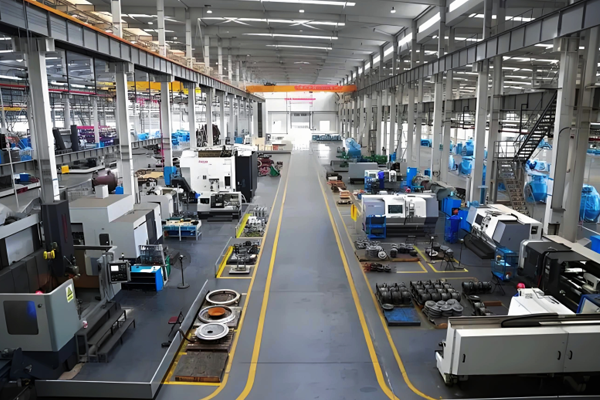
Hot Press Tee
Hot Press Tee is a T-shaped pipe fitting that is formed by heating steel pipe blanks at high temperatures and then pressing them through molds. It is widely used in pipeline systems in industries such as petroleum, chemical, and power to achieve the diversion or merging of media. Its molding process relies on the plastic deformation of metal at high temperatures, and it has the characteristics of compact structure, high strength, and good sealing performance. The following provides a detailed analysis from the aspects of process principles, characteristics, and applications:
1、 Principle of hot pressing forming process
The core of the manufacturing process of hot pressed tees is to utilize the plasticity of metals at high temperatures, and to form a "T" - shaped structure of the billet through external compression. The specific steps are as follows:
Preparation of raw materials: Select seamless steel pipes with the same material as the pipeline as the raw materials (such as carbon steel, stainless steel, alloy steel pipes), and calculate the length and diameter of the raw materials based on the size of the tee (usually the diameter of the raw materials is slightly larger than the diameter of the main pipe, and the length is the sum of the length of the main pipe and the height of the branch pipe of the tee).
Heating treatment: Place the billet into a heating furnace and raise it to the forging temperature range of the metal (different materials have different temperatures, such as carbon steel at about 800-1000 ℃ and stainless steel at about 1100-1250 ℃), so that the billet reaches a plastic state (to avoid overheating or insufficient temperature causing cracking).
Compression molding:
Place the heated billet onto the core rod of the dedicated mold, and reserve a hole in the middle of the billet corresponding to the position of the branch pipe;
Apply axial pressure to the billet through a hydraulic press or pressure machine, while using the branch punch of the mold to squeeze the reserved hole position of the billet from the side, forcing the metal to flow in the direction of the branch pipe, ultimately forming the contour of the main pipe and branch pipe;
If it is a reducing hot press tee, the shrinkage or expansion of the branch pipe needs to be controlled by a mold to make the diameter of the branch pipe smaller than that of the main pipe.
Subsequent processing: After forming, the tee is shaped, cut, and polished to remove burrs and burrs. If necessary, heat treatment (such as annealing) is performed to eliminate internal stress. Finally, non-destructive testing (such as ultrasonic testing) is used to ensure quality.
2、 The core characteristics of hot press tees
Compared to welded tees (made by welding multiple pipe fittings together) or forged tees, the unique advantages of hot pressed tees are reflected in:
Integral molding, high strength: The billet is pressed at high temperature to form an integral structure without welding seams (or only requiring a small amount of repair welding), avoiding defects such as porosity and cracks that may exist in welded joints, and can withstand higher pressure (suitable for medium and high pressure systems, such as Class 300-2500).
Uniform wall thickness and low flow resistance: The wall thickness of the main and branch pipes is consistent with the original material (with small errors), the inner wall is smooth, and the resistance is low when the medium flows, reducing energy loss in the pipeline.
Wide applicability: It can process various materials, including carbon steel (such as Q235, A105), stainless steel (such as 304, 316), alloy steel (such as Cr Mo steel P22, P91), etc., to meet different working conditions.
Moderate cost: Compared to forged tees (suitable for high-pressure small diameters), hot pressed tees are more suitable for medium to large diameters (such as DN50-DN600), and have higher production efficiency and cost advantages.
3、 Classification and specifications
Hot press tees can be classified into the following types based on their structure and size:
According to the diameter relationship:
Equal diameter hot press tee: The main and branch pipes have the same diameter (such as DN100 × DN100), suitable for equal distribution of media;
Reducing Hot Press Tee: A branch pipe with a diameter smaller than the main pipe (e.g. DN200 × DN150) used for connecting pipes of different diameters and adjusting flow distribution.
According to pressure level:
Suitable for medium and low pressure systems (such as PN16-PN64) and high pressure systems (such as PN100-PN250), the corresponding wall thickness of the billet (such as Sch40, Sch80, XXS) needs to be selected according to the pipeline design pressure.
According to the standard:
Following internationally recognized standards such as ASME B16.9 (American standard), EN 10253-2 (European standard), and GB/T 12459 (Chinese standard), parameters such as dimensional tolerances and wall thickness deviations are specified.
4、 Applicable scenarios and limitations
Applicable scenarios
Medium and high pressure pipeline systems: such as hydrogenation units in petroleum refining, steam pipelines (pressure above 10MPa), and the overall structure of hot press tees can withstand high pressure and reduce the risk of leakage;
Large diameter pipelines: DN100-DN600 pipelines are more suitable for hot pressing, which avoids the complex process and deformation problems of large diameter welding compared to welding tees;
High temperature working condition: Hot pressed tees made of alloy steel (such as Cr Mo steel) can be used for high-temperature steam pipelines (300-500 ℃) in thermal power plants, with higher high-temperature strength than ordinary welded tees.
limitation
Small caliber restriction: For small caliber tees below DN25, hot pressing forming is difficult (high precision requirements for billet processing), and forging technology is usually used;
Material sensitivity: Some easily oxidizable materials (such as high nickel alloys) need to control the heating atmosphere (such as inert gas protection) during the hot pressing process, otherwise it may cause surface oxidation or compositional changes;
Shape limitation: It is difficult to produce tees with special angles (such as 45 ° branch pipes) or non-standard structures, and other processes (such as welding+machining) need to be relied upon.
5、 Key points of quality control
Heating temperature: The optimal temperature should be determined based on the material (such as carbon steel 850-950 ℃, stainless steel 1150-1200 ℃). If the temperature is too low, it can easily cause cracking of the billet, while if it is too high, it may burn out the metal structure;
Pressing parameters: Control the pressing speed and pressure to ensure uniform metal flow and avoid defects such as branch eccentricity and uneven wall thickness;
Heat treatment: After forming, annealing or normalizing treatment is required to eliminate internal stress generated during hot pressing and prevent deformation or cracking during use;
Non destructive testing: Check for cracks and interlayers inside through radiographic testing (RT) and ultrasonic testing (UT), and verify sealing through hydrostatic testing.

+86-15533769121

Jango

jango@yuntaopiping.com

Beixiaozhuangzi Industrial Zone, Mengcun Hui Autonomous County
Copyright © 2025-2026 http://www.yuntaopiping.com. All Rights Reserved Yuntao Piping Group.,Ltd.Copyright



